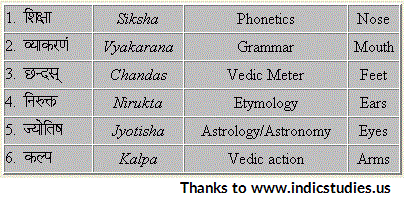Post By: Vishwanath Iyer Published on: December 24, 2016 Reading time: 4 minutes

Elements of Vedanga
Vedānga (वेदाङ्ग – limbs of the Vedas) are six sub-disciplines connected with the study of the Vedas. The intent of Vedānga was to ensure retention of purity of the original texts from degradation arising from time, local syntax, pronunciation changes, introduction of grammatical changes etc., all of which impact languages over time. This study allows the Vedas to retain their original design purity.